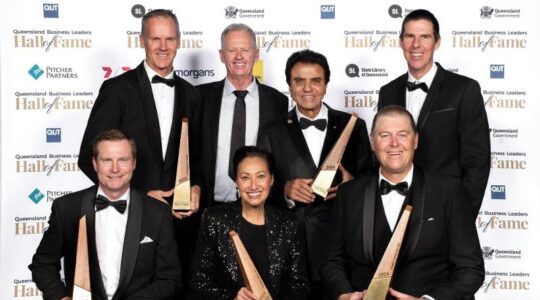If you’re preparing to travel this year, spare a thought for the 1990s when catching a plane meant packing a book to read, smoking in the cabin had just been banned, and the only phone on board was a shared satellite phone.
Corporate Travel Management (CTM) was founded in Brisbane in 1994 in a world marked by a lack of digital tools where simplicity and basic functionality ruled.
Now AI, data insight, content aggregation, and augmentation have created a seamless way of travelling that’s not just about booking a trip – it’s about creating an experience that is personalised for each traveller at their fingertips.
As CTM prepares to celebrate its 30th anniversary in May, hear some thoughts from their staff from around the globe on how things have changed:
Travel Consultants
Thirty years ago, travel consultants were tasked with meticulously handwriting tickets – one mistake could end a customer’s carefully planned trip, and revised dates had to be signified with a sticker.
Each airline had its own metal plate which was used to validate tickets using a carbon impression. “The time it took to ticket a booking back then was easily quadruple what it takes today,” recalls CTM Corporate Travel Consultant Julie Archer.
“These days it is just a couple of keystrokes and you’re done.”
Head of Operations Queensland Gemma Pascoe says customers previously had to visit the CTM office in person while they waited for their upcoming trip to be booked, or they would fax in their requests. The team would then call the airline or travel supplier to process the booking.
Pre-internet, finding suitable accommodation involved sifting through a directory.
Faresdesk Analyst Australia/New Zealand Dawn Eversfield remembers the familiar call of; “Who’s got the Dawson’s guide?” echoing across the office because, without it, there was no other way to determine a location’s available accommodation or contact information.
The directory is no longer published and is part of the National Library of Australia archive.
The customer experience didn’t rely on intricate algorithms. Instead, the office junior would collect all the airline tickets and hand-deliver them to customers within walking distance, while others would receive theirs by mail.
All this of course changed with the introduction of the internet which facilitated better communication and streamlined how people travelled.
The introduction of E-tickets in the early 2000s helped to fast-track the airport experience and eliminate the risk of lost tickets.
Now, CTM’s online booking tool, Lightning, allows agents and travellers to effortlessly secure their entire travel itinerary, including flights, hotels and car hire, in less than 90 seconds.
Travel bookers can access the best corporate deals alongside extensive inventory pulled from a wide range of sources. They can also make choices based on sustainability features, airline performance insights, and enjoy fare forecasting tools to quickly compare prices in a single search.
Smartphones and mobile apps have also re-written the rules of travel. The ability to self-manage travel bookings, stay connected, and receive risk alerts has given empowerment and peace of mind to the business traveller.
The emergence of AI-powered chatbots and virtual assistants, including CTM’s recent introduction of its Scout chatbot, has allowed more time for Travel Consultants to service their customers’ more complex travel needs.
Corporate meetings and events
In the 1990s there was no access to the internet or readily available information, so events were largely a platform for learning.
There was no event technology – just a landline and a fax machine. The concept of online registration was yet to be conceived, and event managers relied on Excel or Word to compile long lists of registration details.
Tracey Edwards, Global Strategic Lead and General Manager Australia/New Zealand at CTM’s specialist meetings & events team, ETM, says secure payment gateways were non-existent, so they had to call customers on a landline, take their details down, and process the payment manually.
Event organisers relied on walkie-talkies or two-way radios, and hotel landlines remained the lifeline for international communication during events.
The event desk itself required an extensive set-up, with a landline phone, printer, and photocopier, all connected to a computer.
Technological advancements brought about a transformation in how corporate meetings and events were planned and communicated, with digital platforms used to manage delegate lists, run sheets, menus, flight and room allocations, and personalised event agendas.
“Being able to make quick changes to agendas, or run polls, surveys, and event gamification has been a real game changer,” Edwards says.
Business travel procurement trends
The formal use of a travel management company or corporate travel services was not widespread in the 90s.
Companies often grappled with the absence of well-defined travel policies. The ad-hoc approach meant employees’ travel experiences were often a mixed bag.
Companies now want a business partner to drive savings, ensure a return on investment, and offer comprehensive solutions that go beyond just itinerary management.
One of the most notable changes has been the establishment of robust business travel policies and programs incorporating multi-channel servicing, supplier contracting and benchmarking, data security, duty of care, and sustainability.
The heightened awareness of global risks associated with cybersecurity underscores the increasing significance of how information is collected, used, shared, stored and secured. Companies now actively seek clarity on these aspects to ensure robust data protection measures are in place.
AI-driven solutions have elevated customer expectations, with an increasing promise of a seamless and efficient experience across the customer’s preferred communication channel, from pre-trip planning to booking, making changes and seeking emergency travel assistance across online booking tools, mobile apps, chatbots, or virtual assistants.
New traveller tracking technology like the CTM Risk Hub was developed to support businesses to quickly identify, understand and communicate emerging travel risks and disruptions across the globe. The ability to integrate risk technology solutions with online booking tools provides customers with the ability to locate their travelling employees, identify and assess potential risk events, and enable swift communications and itinerary updates for those impacted.
Travel supplier experiences
Technology and data have revolutionised the traveller experience by enabling more personalised product recommendations and streamlined processes. Data-driven insights allow travel suppliers to better understand customer preferences, anticipate customer needs and enhance overall satisfaction. The power of loyalty programs, and the data they wield, continues to drive value for both travellers and suppliers in an increasingly competitive and diverse supplier landscape.
Airline choice has become more competitive as new domestic and international airlines have entered the market, seeking to differentiate themselves less on price point and more on travel experience, explains CTM’s Chief Partnerships Officer Global Air and GDS, John Balloch: “Many years ago, there was only a choice between first class and economy, now you’ve got choice between economy, premium economy, business class and first.
“Nowadays there’s inflight entertainment to rival our at-home streaming services, Wi-Fi to enable travellers to stay connected and productive in-flight, the air quality inside the cabin and the noise and temperature is better, and sustainability is becoming a key differentiator for suppliers to cater to the increasing environmental awareness of their customers,” Mr Balloch said. “It’s all about better travel conditions for the traveller.”








